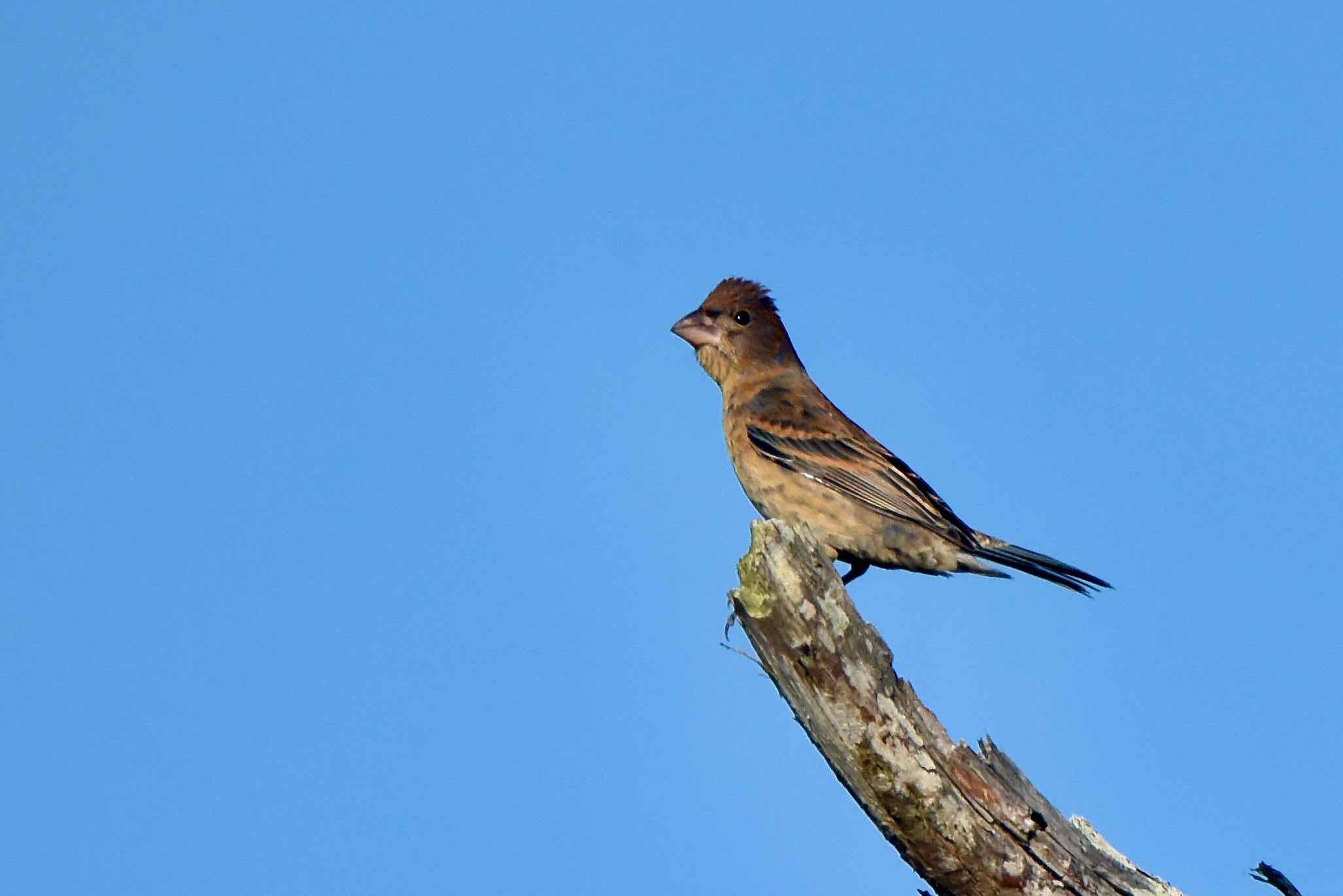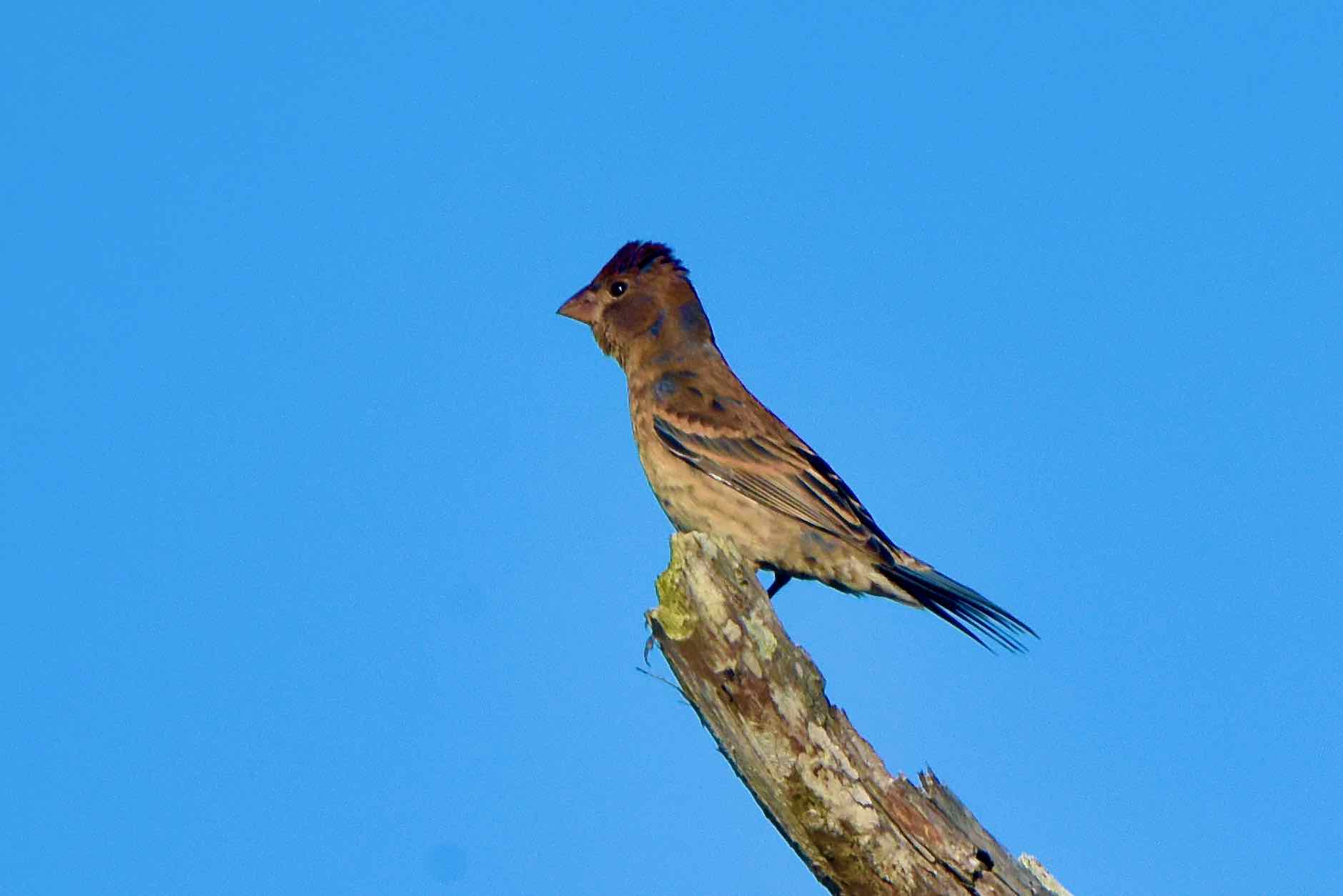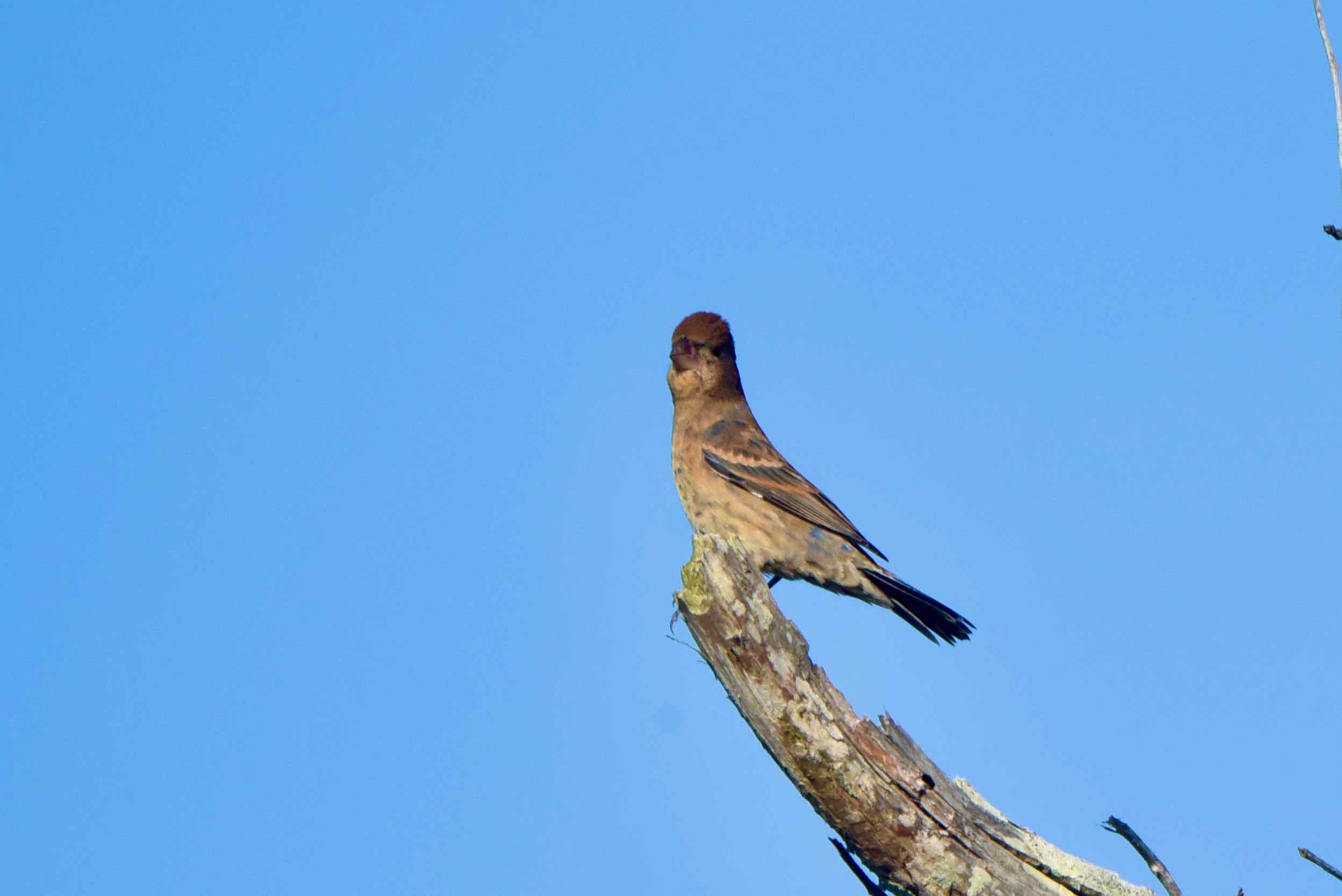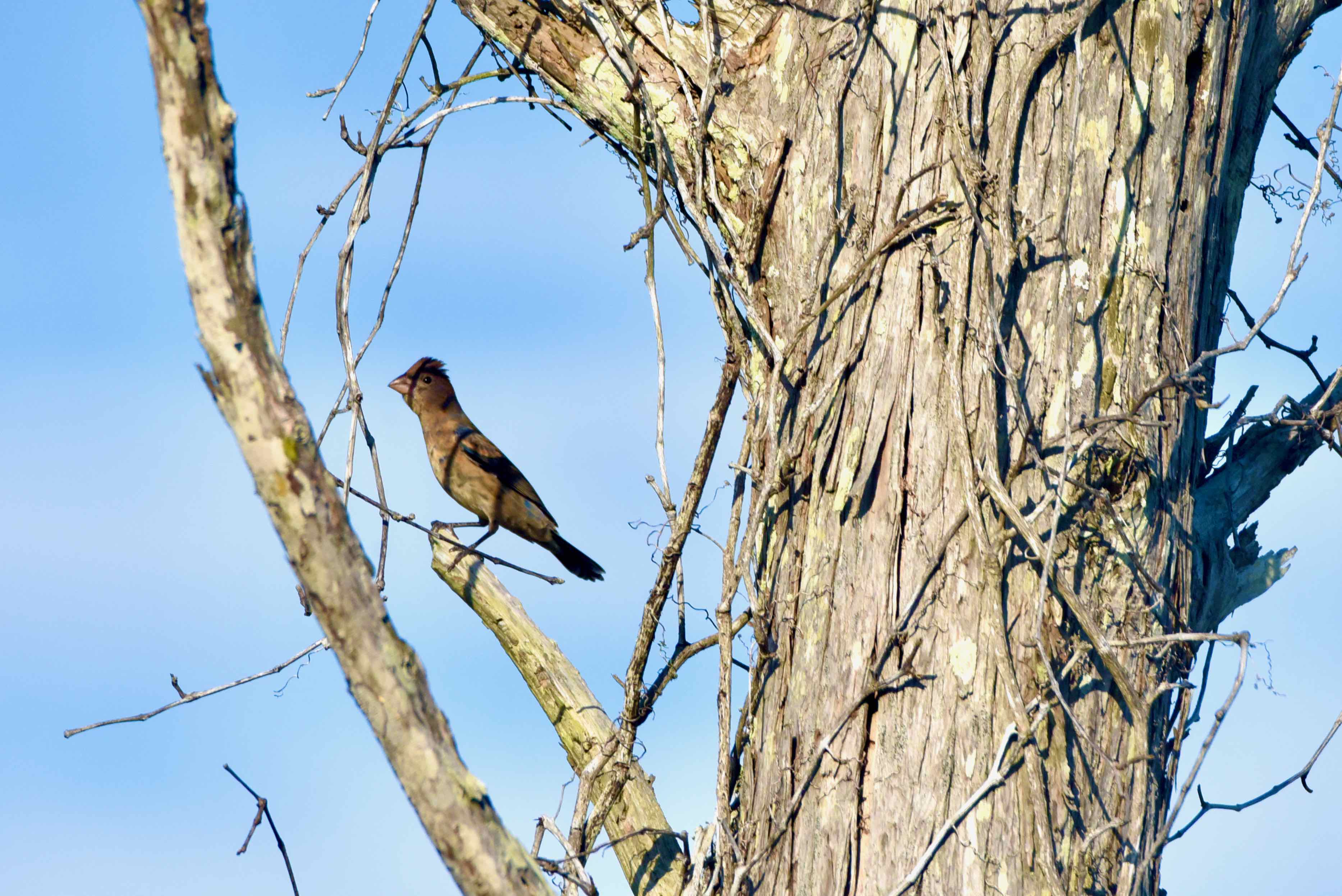
Blue Grosbeak, photographed at Loxahatchee National Wildlife Refuge, Boynton Beach, Palm Beach County, in January 2020.
There may be birds more beautiful in the wilds of Florida than the blue grosbeak, Passerina caerulea, but not many. And like most species, the good looks are limited to adult males, which are absolutely gorgeous sights to behold.
On the other hand, dull is a pretty good word to describe the ladies of the species as well as immature males, which is what we’re showing on this page.
Blue grosbeaks are migrating birds that nest in the southern half of the United States in summer and retreat southward to Mexico, Central America and the Caribbean come winter. Their summer nesting range includes most of non-coastal Florida north of Lake Okeechobee, but a few will winter here as well. They’re seen in South Florida mainly passing through on their way to points south, but there is at least one record of blue grosbeaks nesting in Palm Beach County, according to the Florida Fish and Wildlife Conservation Commission.
The males are brilliant blue with a black face mask and two prominent cinnamon bars in the wings, mixed in with lighter blues and blacks. The bill is large, thick and angular like its cousin, the northern cardinal, and silver in color. A slight, cardinal-like crest is evident at times atop the head. Females and immature males are a dull mix of browns, but they do sport dark cinnamon wing bars. They are medium in size, about six to six-and-a-half inches long with a wing span of about 11 inches, both sexes the same size. Audubon describes them as “oversized” indigo buntings.
In summer, blue grosbeaks take to shrubby habitats, open woods and overgrown fields. In migration and in their winter retreats, they take to similar habitats.
That large bill is perfect for cracking a variety of grass seeds and grains, including wheat, oats and corn. But insects and other invertebrates make up a large portion of their diet — grasshoppers, beetles, caterpillars, mantises, cicadas, spiders and snails are favorite items. They mostly forage on the ground, but they will fly out and pick bugs off leaves and occasionally on the wing.
Nesting season for blue grosbeaks runs from April to August. They place their nests in a low shrubs, briars or in a tangle of vines, usually three to 10 feet off the ground. Females are the nest-builders, constructing an open cup made of grasses, twigs, strips of bark and often with a piece of snake skin or clear plastic. The inside is lined with fine grass, bits of roots and animal hair. Males defend their territory through song.
Clutches are usually three or four eggs, which require 11 to 13 days of incubation before hatching. Mom handles all sitting duties, but dad will fetch food for her. Mom does most of the feeding until the offspring fledge, which happens about 10 days after hatching. Mom may leave to start a second nest; dad will continue to feed the brood until they’re ready to strike out on their own. Males and females are monogamous at least through the breeding season.
Blue grosbeaks have been known to live to nearly six years of age.
Blue grosbeaks are members of Cardinalidae, the cardinal family.
Arthur R. Marshall Loxahatchee National Wildlife Refuge



